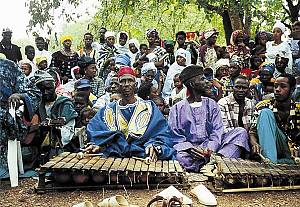The Convention speaks about communities and groups of tradition-bearers in a non-specific way. The spirit of the Convention is such that communities should be seen as having an open character, not necessarily linked to specific territories. Their central role in the implementation of the Convention is already included in the definition provided in Article 2.1 of intangible cultural heritage. Articles 11, 13 and 15 of the Convention provide, among other things, that States Parties are required to take the necessary measures to ensure the safeguarding of the intangible cultural heritage present in their territory and to include communities, groups and relevant NGOs in the identification and definition of elements of that intangible heritage. They shall endeavour to ensure the widest possible participation of communities, groups and individuals that create, maintain and transmit intangible cultural heritage within the framework of their safeguarding activities and actively involve them in its management.
The role given to communities and groups in the Convention is reinforced in the Operational Directives: for instance, inscription on the Lists of the Convention or inclusion in the registry of good practices cannot be done without the free, prior and informed consent of the community or group concerned. Their involvement is also required in the preparation and implementation of safeguarding programmes that benefit from international assistance, and they must be willing to cooperate in the dissemination of best practices if their programme, project or activity is selected by the Committee as best reflecting the principles and objectives of the Convention. Among many other things, the Operational Directives also encourage States Parties to create a consultative body or a coordination mechanism to facilitate their participation, as well as that of experts, centres of expertise and research institutes, in the identification and definition of intangible cultural heritage, the drawing of inventories, the elaboration of programmes, projects and activities, the preparation of nomination files and the removal of an element from a list or its transfer to the other.

© Diemory Kouyaté
Non-governmental organizations which have proven competence, expertise and experience in safeguarding intangible cultural heritage and objectives that are in conformity with the spirit of the Convention as well as operational capacities may be accredited to have advisory functions to the Committee. They may be asked to evaluate nomination files for the Urgent Safeguarding List, requests for international assistance of more than 100 000 USD or the programmes, projects and activities mentioned in Article 18 of the Convention. The criteria and procedures for their accreditation are set out in Chapter III of the Operational Directives.